FLIR B360 Operating Manual
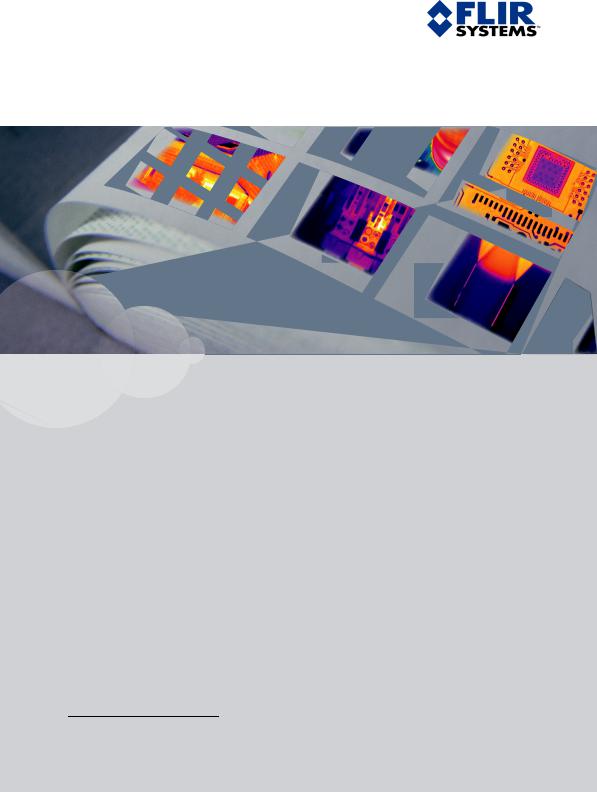
Reference manual
User’s manual – Benutzerhandbuch – Manual del usuario – Manuel de l’utilisateur – Manuale dell’utente – Manual do utilizador – Felhas-
nual – Benutzerhandbuch – Manual del usuario – Manuel de l’utilisateur – Manuale dell’utente – Manual do utilizador – Felhasználói kézikönyv – Käyttäjän opas – Betjenings- ználói kézikönyv – Käyttäjän opas – Betjeningsvejledning – Brukerveiledning – Instrukcja obsługi – Bruksanvisning– Kullanım
ning – Brukerveiledning – Instrukcja obsługi – Bruksanvisning– Kullanım Kılavuzu – Uživatelská příručka – Gebruikershandleiding
Kılavuzu – Uživatelská příručka – Gebruikershandleiding
ThermaCAM™ B360
ThermaCAM™ B400
ThermaCAM™ T360
ThermaCAM™ T400
 Publ. No.
Publ. No.  1558792
1558792
Revision a239
 Language
Language  English (EN)
English (EN)
Issue date August 2, 2007

Warnings & Cautions |
1 |
Notice to user |
2 |
Important note about this manual |
3 |
Quick Start Guide |
4 |
List of accessories |
5 |
A note about ergonomics |
6 |
Camera parts |
7 |
Toolbars and work areas |
8 |
Navigating the menu system |
9 |
External devices and storage media |
10 |
Handling the camera |
11 |
Working with images |
12 |
Working with measurement tools and isotherms |
13 |
Annotating images |
14 |
Changing settings |
15 |

Cleaning the camera |
16 |
|
Technical data |
17 |
|
Dimensions |
18 |
|
Application examples |
19 |
|
Introduction to building thermography |
20 |
|
Introduction to thermographic inspections of |
21 |
|
electrical installations |
||
|
||
About FLIR Systems |
22 |
|
Glossary |
23 |
|
Thermographic measurement techniques |
24 |
|
History of infrared technology |
25 |
|
Theory of thermography |
26 |
|
The measurement formula |
27 |
|
Emissivity tables |
28 |
|
Index |
29 |
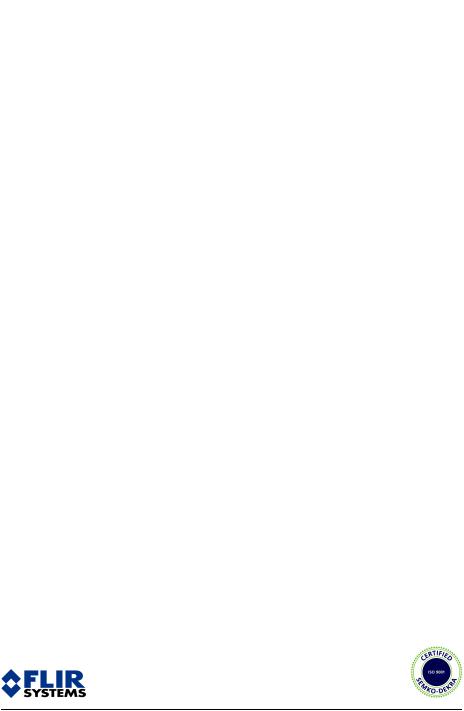
Reference manual
Publ. No. 1558792 Rev. a239 – ENGLISH (EN) – August 2, 2007

Legal disclaimer
All products manufactured by FLIR Systems are warranted against defective materials and workmanship for a period of one (1) year from the delivery date of the original purchase, provided such products have been under normal storage, use and service, and in accordance with FLIR Systems instruction.
All products not manufactured by FLIR Systems included in systems delivered by FLIR Systems to the original purchaser carry the warranty, if any, of the particular supplier only and FLIR Systems has no responsibility whatsoever for such products.
The warranty extends only to the original purchaser and is not transferable. It is not applicable to any product which has been subjected to misuse, neglect, accident or abnormal conditions of operation. Expendable parts are excluded from the warranty.
In the case of a defect in a product covered by this warranty the product must not be further used in order to prevent additional damage. The purchaser shall promptly report any defect to FLIR Systems or this warranty will not apply.
FLIR Systems will, at its option, repair or replace any such defective product free of charge if, upon inspection, it proves to be defective in material or workmanship and provided that it is returned to FLIR Systems within the said one-year period.
FLIR Systems has no other obligation or liability for defects than those set forth above.
No other warranty is expressed or implied. FLIR Systems specifically disclaims the implied warranties of merchantability and fitness for a particular purpose.
FLIR Systems shall not be liable for any direct, indirect, special, incidental or consequential loss or damage, whether based on contract, tort or any other legal theory.
Copyright
©FLIRSystems,2007.Allrightsreservedworldwide.Nopartsofthesoftwareincludingsourcecodemaybereproduced,transmitted,transcribed or translated into any language or computer language in any form or by any means, electronic, magnetic, optical, manual or otherwise, without the prior written permission of FLIR Systems.
This manual must not, in whole or part, be copied, photocopied, reproduced, translated or transmitted to any electronic medium or machine readable form without prior consent, in writing, from FLIR Systems.
Names and marks appearing on the products herein are either registered trademarks or trademarks of FLIR Systems and/or its subsidiaries. Allothertrademarks,tradenamesorcompanynamesreferencedhereinareusedforidentificationonlyandarethepropertyoftheirrespective owners.
Quality assurance
The Quality Management System under which these products are developed and manufactured has been certified in accordance with the ISO 9001 standard.
FLIR Systems is committed to a policy of continuous development; therefore we reserve the right to make changes and improvements on any of the products described in this manual without prior notice.
Patents
This product is protected by patents, design patents, patents pending, or design patents pending.
One or several of the following patents, design patents, patents pending, or design patents pending apply to the products and/or features described in this manual:
Designation |
Status |
Reg. No. |
China |
Application |
00809178.1 |
China |
Application |
01823221.3 |
China |
Application |
01823226.4 |
China |
Design Patent |
235308 |
China |
Design Patent |
ZL02331553.9 |
China |
Design Patent |
ZL02331554.7 |
China |
Pending |
200530018812.0 |
EPC |
Patent |
1188086 |
EPO |
Application |
01930377.5 |
EPO |
Application |
01934715.2 |
EPO |
Application |
27282912 |
EU |
Design Patent |
000279476-0001 |
France |
Patent |
1188086 |
viii
Publ. No. 1558792 Rev. a239 – ENGLISH (EN) – August 2, 2007
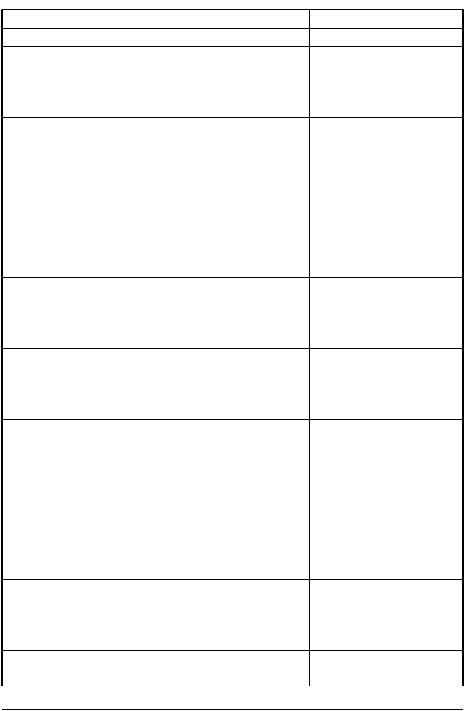
Designation |
Status |
Reg. No. |
Germany |
Patent |
60004227.8 |
Great Britain |
Design Patent |
106017 |
Great Britain |
Design Patent |
3006596 |
Great Britain |
Design Patent |
3006597 |
Great Britain |
Patent |
1188086 |
International |
Design Patent |
DM/057692 |
International |
Design Patent |
DM/061609 |
Japan |
Application |
2000-620406 |
Japan |
Application |
2002-588123 |
Japan |
Application |
2002-588070 |
Japan |
Design Patent |
1144833 |
Japan |
Design Patent |
1182246 |
Japan |
Design Patent |
1182620 |
Japan |
Pending |
2005-020460 |
PCT |
Application |
PCT/SE01/00983 |
PCT |
Application |
PCT/SE01/00984 |
PCT |
Application |
PCT/SE02/00857 |
PCT |
Application |
PCT/SE03/00307 |
PCT |
Application |
PCT/SE/00/00739 |
Sweden |
Application |
0302837-0 |
Sweden |
Design Patent |
68657 |
Sweden |
Design Patent |
75530 |
Sweden |
Patent |
518836 |
Sweden |
Patent |
522971 |
Sweden |
Patent |
524024 |
U.S. |
Application |
09/576266 |
U.S. |
Application |
10/476,760 |
U.S. |
Design Patent |
466540 |
U.S. |
Design Patent |
483782 |
U.S. |
Design Patent |
484155 |
U.S. |
Patent |
5,386,117 |
U.S. |
Patent |
5,637,871 |
U.S. |
Patent |
5,756,999 |
U.S. |
Patent |
6,028,309 |
U.S. |
Patent |
6,707,044 |
U.S. |
Patent |
6,812,465 |
U.S. |
Patent |
7,034,300 |
Publ. No. 1558792 Rev. a239 – ENGLISH (EN) – August 2, 2007

Designation |
Status |
Reg. No. |
U.S. |
Pending |
29/233,400 |
EULA Terms |
|
|
■You have acquired a device (“INFRARED CAMERA”) that includes software licensed by FLIR Systems AB from Microsoft Licensing, GP or its affiliates (“MS”). Those installed software products of MS origin, as well as associated media, printed materials, and “online” or electronicdocumentation(“SOFTWARE”)areprotectedbyinternationalintellectualpropertylawsandtreaties.TheSOFTWAREislicensed, not sold. All rights reserved.
■IF YOU DO NOT AGREE TO THIS END USER LICENSE AGREEMENT (“EULA”), DO NOT USE THE DEVICE OR COPY THE SOFTWARE. INSTEAD, PROMPTLY CONTACT FLIR Systems AB FOR INSTRUCTIONS ON RETURN OF THE UNUSED DEVICE(S) FOR A REFUND.
ANY USE OF THE SOFTWARE, INCLUDING BUT NOT LIMITED TO USE ON THE DEVICE, WILL CONSTITUTE YOUR AGREEMENT TO THIS EULA (OR RATIFICATION OF ANY PREVIOUS CONSENT).
■GRANT OF SOFTWARE LICENSE. This EULA grants you the following license:
■You may use the SOFTWARE only on the DEVICE.
■NOT FAULT TOLERANT. THE SOFTWARE IS NOT FAULT TOLERANT. FLIR Systems AB HAS INDEPENDENTLY DETERMINED HOW TO USE THE SOFTWARE IN THE DEVICE, AND FLIR Systems AB HAS RELIED UPON FLIR Systems AB TO CONDUCT SUFFICIENT TESTING TO DETERMINE THAT THE SOFTWARE IS SUITABLE FOR SUCH USE.
■NO WARRANTIES FOR THE SOFTWARE. THE SOFTWARE is provided “AS IS” and with all faults. THE ENTIRE RISK AS TO SATISFACTORY QUALITY, PERFORMANCE, ACCURACY, AND EFFORT (INCLUDING LACK OF NEGLIGENCE) IS WITH YOU. ALSO, THEREISNOWARRANTYAGAINSTINTERFERENCEWITHYOURENJOYMENTOFTHESOFTWAREORAGAINSTINFRINGEMENT.
IF YOU HAVE RECEIVED ANY WARRANTIES REGARDING THE DEVICE OR THE SOFTWARE, THOSE WARRANTIES DO NOT ORIGINATE FROM, AND ARE NOT BINDING ON, FLIR Systems AB.
■No Liability for Certain Damages. EXCEPT AS PROHIBITED BY LAW, FLIR Systems AB SHALL HAVE NO LIABILITY FOR ANY
INDIRECT, SPECIAL, CONSEQUENTIAL OR INCIDENTAL DAMAGES ARISING FROM OR IN CONNECTION WITH THE USE OR PERFORMANCE OF THE SOFTWARE. THIS LIMITATION SHALL APPLY EVEN IF ANY REMEDY FAILS OF ITS ESSENTIAL PURPOSE. IN NO EVENT SHALL FLIR Systems AB BE LIABLE FOR ANY AMOUNT IN EXCESS OF U.S. TWO HUNDRED FIFTY DOLLARS (U.S.$250.00).
■Limitations on Reverse Engineering, Decompilation, and Disassembly. Youmaynotreverseengineer,decompile,ordisassemble theSOFTWARE,exceptandonlytotheextentthatsuchactivityisexpresslypermittedbyapplicablelawnotwithstandingthislimitation.
■SOFTWARE TRANSFER ALLOWED BUT WITH RESTRICTIONS. YoumaypermanentlytransferrightsunderthisEULAonlyaspart of a permanent sale or transfer of the Device, and only if the recipient agrees to this EULA. If the SOFTWARE is an upgrade, any transfer must also include all prior versions of the SOFTWARE.
■EXPORT RESTRICTIONS. You acknowledge that SOFTWARE is subject to U.S. export jurisdiction. You agree to comply with all applicableinternationalandnationallawsthatapplytotheSOFTWARE,includingtheU.S. ExportAdministrationRegulations,aswell as end-user, end-use and destination restrictions issued by U.S. and other governments. For additional information see http://www.microsoft.com/exporting/.
x
Publ. No. 1558792 Rev. a239 – ENGLISH (EN) – August 2, 2007

Table of contents
1 |
Warnings & Cautions ..................................................................................................................... |
1 |
||
2 |
Notice to user .................................................................................................................................. |
|
4 |
|
3 |
Important note about this manual ................................................................................................. |
7 |
||
4 |
Quick Start Guide ........................................................................................................................... |
9 |
||
5 |
List of accessories ......................................................................................................................... |
11 |
||
6 |
A note about ergonomics .............................................................................................................. |
14 |
||
7 |
Camera parts ................................................................................................................................... |
|
16 |
|
|
7.1 |
View of the rear ..................................................................................................................... |
16 |
|
|
7.2 |
View of the front .................................................................................................................... |
20 |
|
|
7.3 |
View of the bottom side ........................................................................................................ |
22 |
|
|
7.4 |
Battery condition indicator ................................................................................................... |
23 |
|
|
7.5 |
Laser pointer ......................................................................................................................... |
24 |
|
8 |
Toolbars and work areas ................................................................................................................ |
26 |
||
|
8.1 |
Toolbars ................................................................................................................................ |
|
26 |
|
|
8.1.1 |
Measurement toolbar ............................................................................................ |
26 |
|
|
8.1.2 |
Documentation toolbar ......................................................................................... |
27 |
|
|
8.1.3 |
Image marker toolbar ........................................................................................... |
28 |
|
|
8.1.4 |
Voice annotation toolbar ....................................................................................... |
29 |
|
8.2 |
Work areas ............................................................................................................................ |
30 |
|
|
|
8.2.1 |
Main work area ..................................................................................................... |
30 |
|
|
8.2.2 |
Sketch work area .................................................................................................. |
32 |
|
|
8.2.3 |
Text annotation and image description work area ............................................... |
34 |
|
|
8.2.4 |
Operation mode area ............................................................................................ |
37 |
9 |
Navigating the menu system ......................................................................................................... |
39 |
||
10 |
External devices and storage media ............................................................................................ |
41 |
||
|
10.1 |
Connecting external devices ................................................................................................ |
42 |
|
|
10.2 |
Inserting SD Memory Cards ................................................................................................. |
43 |
|
11 |
Handling the camera ...................................................................................................................... |
44 |
||
|
11.1 |
Charging the battery ............................................................................................................. |
44 |
|
|
|
11.1.1 Using the combined power supply and battery charger to charge the battery |
|
|
|
|
|
when it is inside the camera ................................................................................. |
45 |
|
|
11.1.2 Using the combined power supply and battery charger to charge the battery |
|
|
|
|
|
when it is outside the camera ............................................................................... |
46 |
|
|
11.1.3 Using the stand-alone battery charger to charge the battery .............................. |
47 |
|
|
11.2 |
Inserting the battery .............................................................................................................. |
48 |
|
|
11.3 |
Removing the battery ........................................................................................................... |
50 |
|
|
11.4 |
Turning on the camera ......................................................................................................... |
52 |
|
|
11.5 |
Turning off the camera .......................................................................................................... |
52 |
|
|
11.6 |
Adjusting the angle of lens ................................................................................................... |
53 |
|
|
11.7 |
Mounting an additional infrared lens .................................................................................... |
54 |
|
|
11.8 |
Removing an additional infrared lens .................................................................................. |
56 |
|
Publ. No. 1558792 Rev. a239 – ENGLISH (EN) – August 2, 2007 |
xi |

|
11.9 |
Attaching the sunshield ........................................................................................................ |
58 |
|
|
11.10 |
Using the laser pointer ......................................................................................................... |
60 |
|
12 |
Working with images ...................................................................................................................... |
61 |
||
|
12.1 |
Adjusting the infrared camera focus .................................................................................... |
61 |
|
|
12.2 |
Previewing an image ............................................................................................................ |
62 |
|
|
12.3 |
Saving an image ................................................................................................................... |
63 |
|
|
12.4 |
Opening an image ................................................................................................................ |
64 |
|
|
12.5 |
Adjusting an image manually ............................................................................................... |
65 |
|
|
12.6 |
Hiding overlay graphics ........................................................................................................ |
68 |
|
|
12.7 |
Deleting an image ................................................................................................................. |
69 |
|
|
12.8 |
Deleting all images ............................................................................................................... |
70 |
|
13 Working with measurement tools and isotherms ....................................................................... |
72 |
|||
|
13.1 |
Setting up measurement tools ............................................................................................. |
72 |
|
|
13.2 |
Setting up measurement tools (advanced mode) ............................................................... |
73 |
|
|
13.3 |
Setting up isotherms ............................................................................................................ |
74 |
|
|
13.4 |
Removing measurement tools ............................................................................................. |
76 |
|
|
13.5 |
Moving measurement tools .................................................................................................. |
77 |
|
|
13.6 |
Resizing areas ...................................................................................................................... |
78 |
|
|
13.7 |
Changing object parameters ................................................................................................ |
79 |
|
14 |
Annotating images .......................................................................................................................... |
81 |
||
|
14.1 |
Adding a digital photo .......................................................................................................... |
82 |
|
|
14.2 |
Adding a voice annotation .................................................................................................... |
83 |
|
|
14.3 |
Adding a text annotation ...................................................................................................... |
84 |
|
|
14.4 |
Adding an image description ............................................................................................... |
87 |
|
|
14.5 |
Adding a sketch .................................................................................................................... |
88 |
|
|
14.6 |
Adding an image marker ...................................................................................................... |
89 |
|
15 |
Changing settings .......................................................................................................................... |
91 |
||
|
15.1 |
Changing image settings ..................................................................................................... |
91 |
|
|
15.2 |
Changing regional settings .................................................................................................. |
92 |
|
|
15.3 |
Changing camera settings ................................................................................................... |
93 |
|
16 |
Cleaning the camera ...................................................................................................................... |
95 |
||
|
16.1 |
Camera housing, cables, and other items ........................................................................... |
95 |
|
|
16.2 |
Infrared lens .......................................................................................................................... |
96 |
|
17 |
Technical data |
................................................................................................................................. |
97 |
|
18 |
Dimensions ...................................................................................................................................... |
|
111 |
|
|
18.1 |
Camera ................................................................................................................................. |
|
111 |
|
|
18.1.1 .............................................................................................. |
Camera dimensions |
111 |
|
|
18.1.2 ........................................................................... |
Camera dimensions, continued |
112 |
|
|
18.1.3 ........................................................................... |
Camera dimensions, continued |
113 |
|
|
18.1.4 .......................................Camera dimensions, continued (with 30 mm/15° lens) |
114 |
|
|
|
18.1.5 .......................................Camera dimensions, continued (with 10 mm/45° lens) |
115 |
|
|
18.2 |
Battery ................................................................................................................................... |
|
116 |
|
18.3 |
Stand-alone .................................................................................................battery charger |
117 |
|
|
18.4 |
Stand-alone .......................................................................battery charger with the battery |
118 |
|
|
18.5 |
Infrared .....................................................................................................lens (30 mm/15°) |
119 |
|
|
18.6 |
Infrared .....................................................................................................lens (10 mm/45°) |
120 |
|
19 |
Application examples ..................................................................................................................... |
121 |
||
xii
Publ. No. 1558792 Rev. a239 – ENGLISH (EN) – August 2, 2007

19.1 Moisture & water damage .................................................................................................... |
121 |
|||
19.2 Faulty contact in socket ........................................................................................................ |
122 |
|||
19.3 |
Oxidized socket .................................................................................................................... |
|
123 |
|
19.4 |
Insulation deficiencies .......................................................................................................... |
124 |
||
19.5 |
Draft ...................................................................................................................................... |
|
|
125 |
20 Introduction to building thermography ........................................................................................ |
127 |
|||
20.1 |
Important note ...................................................................................................................... |
|
127 |
|
20.2 |
Typical field investigations .................................................................................................... |
127 |
||
|
20.2.1 |
Guidelines ............................................................................................................. |
127 |
|
|
|
20.2.1.1 |
General guidelines ............................................................................ |
127 |
|
|
20.2.1.2 |
Guidelines for moisture detection, mold detection & detection of |
|
|
|
|
water damages .................................................................................. |
128 |
|
|
20.2.1.3 |
Guidelines for detection of air infiltration & insulation deficiencies ... |
128 |
|
20.2.2 |
About moisture detection ..................................................................................... |
129 |
|
|
20.2.3 Moisture detection (1): Low-slope commercial roofs .......................................... |
129 |
||
|
|
20.2.3.1 |
General information ........................................................................... |
129 |
|
|
20.2.3.2 |
Safety precautions ............................................................................ |
130 |
|
|
20.2.3.3 |
Commented building structures ....................................................... |
131 |
|
|
20.2.3.4 |
Commented infrared images ............................................................ |
132 |
|
20.2.4 Moisture detection (2): Commercial & residential façades .................................. |
134 |
||
|
|
20.2.4.1 |
General information ........................................................................... |
134 |
|
|
20.2.4.2 |
Commented building structures ....................................................... |
134 |
|
|
20.2.4.3 |
Commented infrared images ............................................................ |
136 |
|
20.2.5 Moisture detection (3): Decks & balconies .......................................................... |
136 |
||
|
|
20.2.5.1 |
General information ........................................................................... |
136 |
|
|
20.2.5.2 |
Commented building structures ....................................................... |
137 |
|
|
20.2.5.3 |
Commented infrared images ............................................................ |
139 |
|
20.2.6 Moisture detection (4): Plumbing breaks & leaks ................................................ |
139 |
||
|
|
20.2.6.1 |
General information ........................................................................... |
139 |
|
|
20.2.6.2 |
Commented infrared images ............................................................ |
140 |
|
20.2.7 |
Air infiltration ......................................................................................................... |
142 |
|
|
|
20.2.7.1 |
General information ........................................................................... |
142 |
|
|
20.2.7.2 |
Commented building structures ....................................................... |
142 |
|
|
20.2.7.3 |
Commented infrared images ............................................................ |
144 |
|
20.2.8 |
Insulation |
deficiencies .......................................................................................... |
145 |
|
|
20.2.8.1 |
General information ........................................................................... |
145 |
|
|
20.2.8.2 |
Commented building structures ....................................................... |
145 |
|
|
20.2.8.3 |
Commented infrared images ............................................................ |
147 |
20.3 Theory of building science ................................................................................................... |
149 |
|||
|
20.3.1 |
General information .............................................................................................. |
149 |
|
|
20.3.2 The effects of testing and checking ..................................................................... |
150 |
||
|
20.3.3 Sources of disruption in thermography ................................................................ |
151 |
||
|
20.3.4 Surface temperature and air leaks ....................................................................... |
153 |
||
|
|
20.3.4.1 |
Pressure conditions in a building ..................................................... |
153 |
|
20.3.5 Measuring conditions & measuring season ......................................................... |
159 |
||
|
20.3.6 Interpretation of infrared images .......................................................................... |
159 |
||
|
20.3.7 Humidity & dew point ........................................................................................... |
161 |
||
|
|
20.3.7.1 |
Relative & absolute humidity ............................................................ |
161 |
|
|
20.3.7.2 |
Definition of dew point ...................................................................... |
162 |
20.3.8Excerpt from Technical Note ‘Assessing thermal bridging and insulation
continuity’ (UK example) ...................................................................................... |
162 |
|
20.3.8.1 |
Credits ............................................................................................... |
162 |
Publ. No. 1558792 Rev. a239 – ENGLISH (EN) – August 2, 2007 |
xiii |

|
|
20.3.8.2 |
Introduction ....................................................................................... |
163 |
|
|
20.3.8.3 |
Background information ................................................................... |
163 |
|
|
20.3.8.4 |
Quantitative appraisal of thermal anomalies .................................... |
164 |
|
|
20.3.8.5 |
Conditions and equipment ............................................................... |
167 |
|
|
20.3.8.6 |
Survey and analysis .......................................................................... |
168 |
|
|
20.3.8.7 |
Reporting ........................................................................................... |
169 |
20.4 |
Disclaimer ............................................................................................................................. |
|
171 |
|
|
20.4.1 |
Copyright notice ................................................................................................... |
171 |
|
|
20.4.2 |
Training & certification .......................................................................................... |
171 |
|
|
20.4.3 National or regional building codes ..................................................................... |
171 |
||
21 Introduction to thermographic inspections of electrical installations ...................................... |
173 |
|||
21.1 |
Important note ...................................................................................................................... |
|
173 |
|
21.2 |
General information .............................................................................................................. |
|
173 |
|
|
21.2.1 |
Introduction ........................................................................................................... |
173 |
|
|
21.2.2 |
General equipment data ....................................................................................... |
174 |
|
|
21.2.3 |
Inspection ............................................................................................................. |
|
175 |
|
21.2.4 |
Classification & reporting ...................................................................................... |
175 |
|
|
21.2.5 |
Priority ................................................................................................................... |
|
176 |
|
21.2.6 |
Repair .................................................................................................................... |
|
176 |
|
21.2.7 |
Control .................................................................................................................. |
|
177 |
21.3 |
Measurement technique for thermographic inspection of electrical installations ............... |
178 |
||
|
21.3.1 How to correctly set the equipment ..................................................................... |
178 |
||
|
21.3.2 |
Temperature measurement ................................................................................... |
178 |
|
|
21.3.3 |
Comparative measurement .................................................................................. |
180 |
|
|
21.3.4 |
Normal operating temperature ............................................................................. |
181 |
|
|
21.3.5 |
Classification of faults ........................................................................................... |
182 |
|
21.4 |
Reporting .............................................................................................................................. |
|
184 |
|
21.5 |
Different types of hot spots in electrical installations ........................................................... |
186 |
||
|
21.5.1 |
Reflections |
............................................................................................................ |
186 |
|
21.5.2 |
Solar heating ......................................................................................................... |
186 |
|
|
21.5.3 |
Inductive heating ................................................................................................... |
187 |
|
|
21.5.4 |
Load variations ...................................................................................................... |
187 |
|
|
21.5.5 |
Varying cooling conditions ................................................................................... |
188 |
|
|
21.5.6 |
Resistance variations ............................................................................................ |
189 |
|
|
21.5.7 Overheating in one part as a result of a fault in another ...................................... |
189 |
||
21.6 |
Disturbance factors at thermographic inspection of electrical installations ........................ |
191 |
||
|
21.6.1 |
Wind ...................................................................................................................... |
|
191 |
|
21.6.2 |
Rain and snow ...................................................................................................... |
191 |
|
|
21.6.3 |
Distance to object ................................................................................................. |
192 |
|
|
21.6.4 |
Object size |
............................................................................................................ |
193 |
21.7 |
Practical advice for the thermographer ................................................................................ |
195 |
||
|
21.7.1 From cold to hot ................................................................................................... |
195 |
||
|
21.7.2 |
Rain showers ........................................................................................................ |
195 |
|
|
21.7.3 |
Emissivity .............................................................................................................. |
|
195 |
|
21.7.4 |
Reflected apparent temperature ........................................................................... |
196 |
|
|
21.7.5 Object too far away ............................................................................................... |
196 |
||
22 About FLIR Systems ....................................................................................................................... |
|
197 |
||
22.1 |
More than just an infrared camera ....................................................................................... |
198 |
||
22.2 |
Sharing our knowledge ........................................................................................................ |
198 |
||
22.3 |
Supporting our customers ................................................................................................... |
198 |
||
22.4 |
A few images from our facilities ........................................................................................... |
199 |
||
xiv
Publ. No. 1558792 Rev. a239 – ENGLISH (EN) – August 2, 2007

23 |
Glossary ........................................................................................................................................... |
|
|
201 |
|
24 |
Thermographic measurement techniques ................................................................................... |
205 |
|||
|
24.1 |
Introduction .......................................................................................................................... |
|
205 |
|
|
24.2 |
Emissivity .............................................................................................................................. |
|
205 |
|
|
|
24.2.1 Finding the emissivity of a sample ....................................................................... |
206 |
||
|
|
|
24.2.1.1 |
Step 1: Determining reflected apparent temperature ....................... |
206 |
|
|
|
24.2.1.2 |
Step 2: Determining the emissivity ................................................... |
208 |
|
24.3 |
Reflected apparent temperature .......................................................................................... |
209 |
||
|
24.4 |
Distance ................................................................................................................................ |
|
|
209 |
|
24.5 |
Relative humidity .................................................................................................................. |
|
209 |
|
|
24.6 |
Other parameters .................................................................................................................. |
|
209 |
|
25 |
History of infrared technology ...................................................................................................... |
211 |
|||
26 |
Theory of thermography ................................................................................................................ |
|
215 |
||
|
26.1 |
Introduction ........................................................................................................................... |
|
215 |
|
|
26.2 |
The electromagnetic spectrum ............................................................................................ |
215 |
||
|
26.3 |
Blackbody radiation .............................................................................................................. |
|
216 |
|
|
|
26.3.1 |
Planck’s law .......................................................................................................... |
217 |
|
|
|
26.3.2 |
Wien’s displacement law ...................................................................................... |
218 |
|
|
|
26.3.3 |
Stefan-Boltzmann's law ......................................................................................... |
220 |
|
|
|
26.3.4 |
Non-blackbody emitters ....................................................................................... |
221 |
|
|
26.4 |
Infrared semi-transparent materials ..................................................................................... |
223 |
||
27 |
The measurement formula ............................................................................................................. |
|
225 |
||
28 |
Emissivity tables ............................................................................................................................. |
|
231 |
||
|
28.1 |
References ............................................................................................................................ |
|
231 |
|
|
28.2 |
Important note about the emissivity tables .......................................................................... |
231 |
||
|
28.3 |
Tables .................................................................................................................................... |
|
|
231 |
|
Index |
................................................................................................................................................ |
|
|
247 |
Publ. No. 1558792 Rev. a239 – ENGLISH (EN) – August 2, 2007 |
xv |

xvi
Publ. No. 1558792 Rev. a239 – ENGLISH (EN) – August 2, 2007

1 |
Warnings & Cautions |
1 |
|
WARNING
CAUTION
■This equipment generates, uses, and can radiate radio frequency energy and if not installed and used in accordance with the instruction manual, may cause interference to radio communications. It has been tested and found to comply with the limits for a Class A computing device pursuant to Subpart J of Part 15 of FCC Rules,whicharedesignedtoprovidereasonableprotectionagainstsuchinterference when operated in a commercial environment. Operation of this equipment in a residential area is likely to cause interference in which case the user at his own expense will be required to take whatever measures may be required to correct the interference.
■(Applies only to cameras with laser pointer:) Do not look directly into the laser beam. The laser beam can cause eye irritation.
■Do not disassemble or do a modification to the battery. The battery contains safety and protection devices which, if they become damaged, can cause the battery to become hot, or cause an explosion or an ignition.
■Ifthereisaleakfromthebatteryandthefluidgetsintoyoureyes,donotrubyour eyes. Flush well with water and immediately get medical care. The battery fluid can cause injury to your eyes if you do not do this.
■Donotcontinuetochargethebatteryifitdoesnotbecomechargedinthespecified chargingtime. Ifyoucontinuetochargethebattery,itcanbecomehotandcause an explosion or ignition.
■Only use the correct equipment to discharge the battery. If you do not use the correct equipment, you can decrease the performance or the life cycle of the battery. If you do not use the correct equipment, an incorrect flow of current to the battery can occur. This can cause the battery to become hot, or cause an explosion and injury to persons.
■Make sure that you read all applicable MSDS (Material Safety Data Sheets) and warninglabelsoncontainersbeforeyouusealiquid:theliquidscanbedangerous.
■Donotpointtheinfraredcamera(withorwithoutthelenscover)atintensiveenergy
sources,forexampledevicesthatemitlaserradiation,orthesunforalongperiod of time. This can have an unwanted effect on the accuracy of the camera. It can also cause damage to the detector in the camera.
■Do not use the camera in a temperature higher than +50°C (+122°F), unless specified otherwise in the technical data section. High temperatures can cause damage to the camera.
■(Applies only to cameras with laser pointer:) Protect the laser pointer with the protective cap when you do not operate the laser pointer.
■Do not attach the batteries directly to a car’s cigarette lighter socket.
■Do not connect the positive terminal and the negative terminal of the battery to each other with a metal object (such as wire).
■Do not get water or salt water on the battery, or permit the battery to get wet.
■Donotmakeholesinthebatterywithobjects.Donothitthebatterywithahammer. Do not step on the battery, or apply strong impacts or shocks to it.
■Do not put the batteries in or near a fire, or into direct sunlight. When the battery becomes hot, the built-in safety equipment becomes energized and can stop the battery charging process. If the battery becomes hot, damage can occur to the safetyequipmentandthiscancausemoreheat,damageorignitionofthebattery.
Publ. No. 1558792 Rev. a239 – ENGLISH (EN) – August 2, 2007 |
1 |

1 – Warnings & Cautions
1■ Do not put the battery on a fire or increase the temperature of the battery with
heat.
■Donotputthebatteryonornearfires,stoves,orotherhigh-temperaturelocations.
■Do not solder directly onto the battery.
■Do not use the battery if, when you use, charge, or store the battery, there is an unusual smell from the battery, the battery feels hot, changes color, changes shape, or is in an unusual condition. Contact your sales office if one or more of these problems occurs.
■Only use a specified battery charger when you charge the battery.
■The temperature range through which you can charge the battery is ±0°C to +45°C (+32°F to +113°F). If you charge the battery at temperatures out of this range, it can cause the battery to become hot or to break. It can also decrease the performance or the life cycle of the battery.
■The temperature range through which you can discharge the battery is −15°C to +50°C (+5°F to +122°F). Use of the battery out of this temperature range can decrease the performance or the life cycle of the battery.
■When the battery is worn, apply insulation to the terminals with adhesive tape or similar materials before you discard it.
■Do not apply solvents or similar liquids to the camera, the cables, or other items. This can cause damage.
■Becarefulwhenyoucleantheinfraredlens. Thelenshasadelicateanti-reflective coating.
■Do not clean the infrared lens too vigorously. This can damage the anti-reflective coating.
2 |
Publ. No. 1558792 Rev. a239 – ENGLISH (EN) – August 2, 2007 |

1 – Warnings & Cautions
1
INTENTIONALLY LEFT BLANK
Publ. No. 1558792 Rev. a239 – ENGLISH (EN) – August 2, 2007 |
3 |
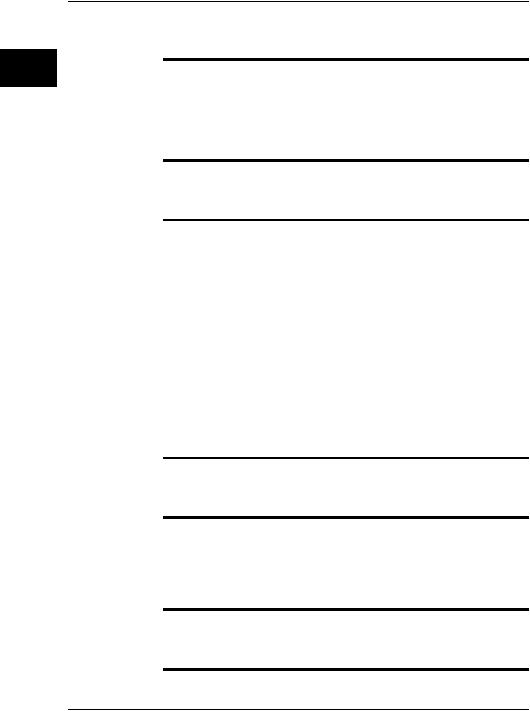
2Notice to user
2Typographical This manual uses the following typographical conventions:
conventions |
Semibold is used for menu names, menu commands and labels, and buttons in |
■ |
|
|
dialog boxes. |
■ Italic is used for important information. ■ Monospace is used for code samples.
■ UPPER CASE is used for names on keys and buttons.
Comments and questions
Technical support
User-to-user forums
Software updates
Make a report of errors that you find, as well as your suggestions for new revisions. Send an e-mail to:
documentation@flir.se
For technical support, visit:
http://flir.custhelp.com
To submit a question to the technical support team, you must be a registered user. It only takes a few minutes to register online. If you only want to search the knowledgebase for existing questions and answers, you do not need to be a registered user.
Whenyouwanttosubmitaquestion,makesurethatyouhavethefollowinginformation to hand:
■The camera model
■The camera serial number
■The communication protocol, or method, between the camera and your PC (for example, Ethernet, USB, or FireWire)
■Operating system on your PC
■Microsoft® Office version
■Full name, publication number, and revision number of the manual
Exchangeideas,problems,andinfraredsolutionswithfellowthermographersaround the world in our user-to-user forums. To go to the forums, visit:
http://www.infraredtraining.com/community/boards/
FLIRSystemsregularlyissuessoftwareupgradesandservicereleasesonthesupport pages of the company website:
http://www.flirthermography.com
To find the latest upgrades and service releases, make that sure you select USA in the Select country box in the top right corner of the page.
Calibration |
(This notice only applies to cameras with measurement capabilities.) |
|
We recommend that you send in the camera for calibration once a year. Contact |
|
your local sales office for instructions on where to send the camera. |
Accuracy |
(This notice only applies to cameras with measurement capabilities.) |
4 |
Publ. No. 1558792 Rev. a239 – ENGLISH (EN) – August 2, 2007 |
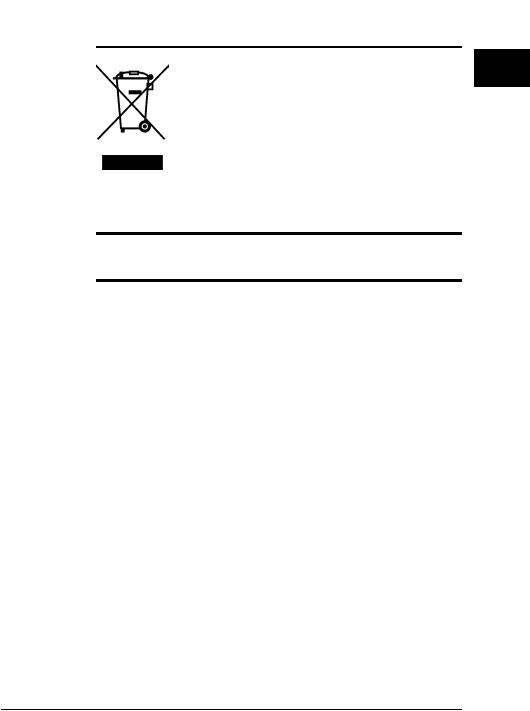
Disposal of electronic waste
Training
2 – Notice to user
For very accurate results, we recommend that you wait 5 minutes after you have started the camera before measuring a temperature.
10742803;a1
2
Aswithmostelectronicproducts,thisequipmentmustbedisposedofinanenvironmentallyfriendlyway,andinaccordancewithexistingregulationsforelectronicwaste.
Please contact your FLIR Systems representative for more details.
To read about infrared training, visit:
http://www.infraredtraining.com
Publ. No. 1558792 Rev. a239 – ENGLISH (EN) – August 2, 2007 |
5 |

2 – Notice to user
2
INTENTIONALLY LEFT BLANK
6 |
Publ. No. 1558792 Rev. a239 – ENGLISH (EN) – August 2, 2007 |

3Importantnoteaboutthismanual
General
NOTE
FLIR Systems issues generic manuals that cover several cameras within a model line.
This means that this manual may contain descriptions and explanations that do not |
3 |
apply to your particular camera model. |
FLIR Systems reserves the right to discontinue models, parts or accessories, and other items, or to change specifications at any time without prior notice.
Publ. No. 1558792 Rev. a239 – ENGLISH (EN) – August 2, 2007 |
7 |

3 – Important note about this manual
3
INTENTIONALLY LEFT BLANK
8 |
Publ. No. 1558792 Rev. a239 – ENGLISH (EN) – August 2, 2007 |
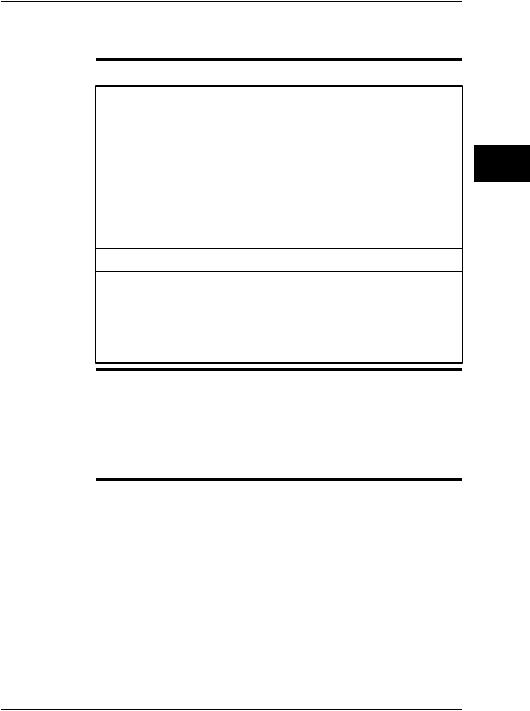
4Quick Start Guide
Procedure
SEE
Follow this procedure to get started right away: |
|
|
1 |
Charge the battery for four hours. |
|
2 |
Insert the battery into the camera. |
|
3 |
Insert an SD Memory Card into the card slot at the top of the camera. |
|
4 |
Push the On/Off button to turn on the camera. |
4 |
5 |
Set the correct object temperature range. |
|
6 |
Aim the camera toward your target of interest. |
|
7 |
Use the Focus button to focus the camera. |
|
8 |
Push the Preview/Save button to save the image. |
|
9To move the image to a computer, do one of the following:
■RemovetheSDMemoryCardandinsertitintoacardreaderconnected to a computer.
■Connect a computer to the camera using a USB Mini-B cable.
10 Movetheimagefromthecardorcamerausingadrag-and-dropoperation.
Movetheimagefromthecardorcamerausingadrag-and-dropoperation.
■Section 11.1 – Charging the battery on page 44
■Section 11.2 – Inserting the battery on page 48
■Section 10.2 – Inserting SD Memory Cards on page 43
■Section 11.4 – Turning on the camera on page 52
■Section 15.1 – Changing image settings on page 91
■Section 13 – Working with measurement tools and isotherms on page 72
■Section 10.1 – Connecting external devices on page 42
Publ. No. 1558792 Rev. a239 – ENGLISH (EN) – August 2, 2007 |
9 |

4 – Quick Start Guide
4
INTENTIONALLY LEFT BLANK
10 |
Publ. No. 1558792 Rev. a239 – ENGLISH (EN) – August 2, 2007 |

5
General
Contents
List of accessories
This section contains a list of accessories that you can purchase for your camera. The accessories included in the transport case depends on the camera model and customer configuration.
Item |
Part number |
|
|
12 VDC power cable with cigarette |
1910490 |
|
|
lighter adapter |
|
|
|
Additional infrared lens (10 mm/45°) |
1196725 |
|
|
Additional infrared lens (30 mm/15°) |
1196724 |
5 |
|
Battery |
1196398 |
|
|
Battery charger |
1196474 |
|
|
Camera pouch |
1124545 |
|
|
Documentation CD-ROM (including |
1124640 |
|
|
reference manuals in multiple lan- |
|
|
|
guages, application guides, etc.) |
|
|
|
Lens cap for infrared camera |
1196818 |
|
|
Microphone headset |
1910489 |
|
|
Neck strap |
1124544 |
|
|
Power cord |
One of the following: |
|
|
|
■ |
EU: 1910400 |
|
|
■ |
USA: 1910401 |
|
|
■ |
Great Britain: 1910402 |
|
|
■ |
Australia: 1910464 |
|
Power supply |
1910399 |
|
|
SD Memory Card, 256 MB |
1910473 |
|
|
Stylus pen |
1196795 |
|
|
Sunshield |
1123970 |
|
|
USB cable |
1910423 |
|
|
User manual |
1558790 |
|
|
Video cable |
1910582 |
|
|
Publ. No. 1558792 Rev. a239 – ENGLISH (EN) – August 2, 2007 |
11 |
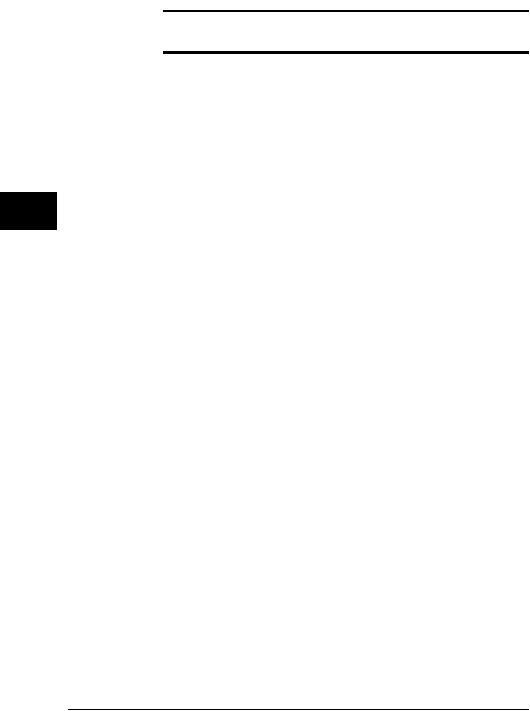
5 – List of accessories
NOTE |
FLIR Systems reserves the right to discontinue models, parts or accessories, and |
|
other items, or to change specifications at any time without prior notice. |
5
12 |
Publ. No. 1558792 Rev. a239 – ENGLISH (EN) – August 2, 2007 |

5 – List of accessories
5
INTENTIONALLY LEFT BLANK
Publ. No. 1558792 Rev. a239 – ENGLISH (EN) – August 2, 2007 |
13 |
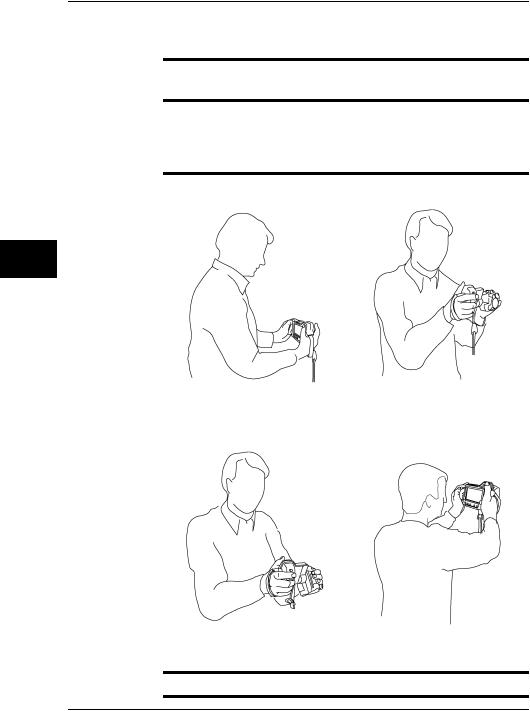
6A note about ergonomics
General |
To prevent strain injuries, it is important that you hold the camera ergonomically |
|
|
correct. This section gives advice and examples on how to hold the camera. |
|
NOTE |
Please note the following: |
|
|
■ Always adjust the angle of the lens to suit your work position. |
|
|
■ Whenyouholdthecamera,makesurethatyousupportthecamerahousingwith |
|
|
your left hand too. This decreases the strain on your right hand. |
|
Figure |
10758503;a1 |
10758603;a1 |
|
|
|
6
10758803;a1 |
10758703;a1 |
SEE ALSO |
■ Section 11.6 – Adjusting the angle of lens on page 53 |
14 |
Publ. No. 1558792 Rev. a239 – ENGLISH (EN) – August 2, 2007 |
